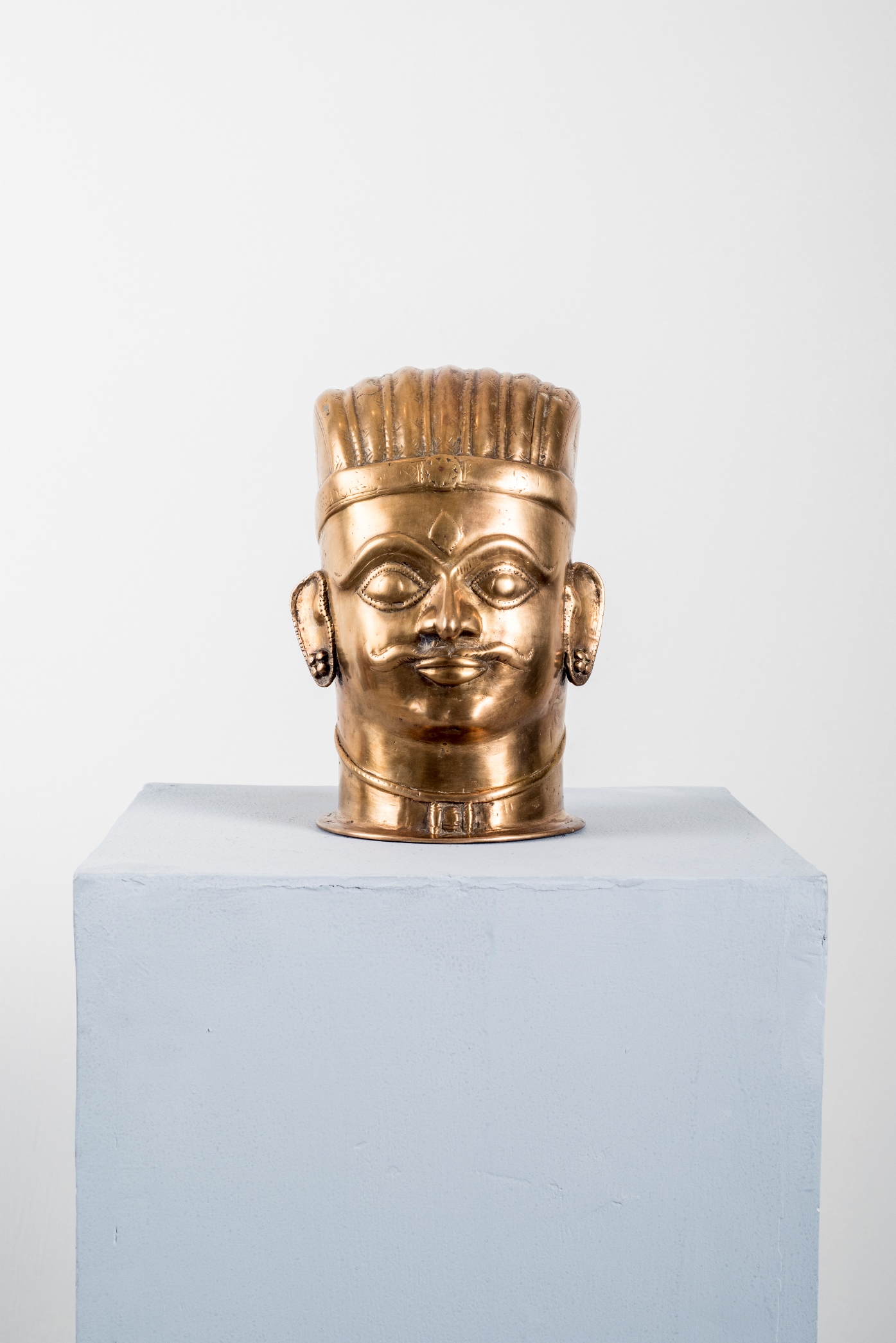
Mukhalingam, Brass, 10 inches, 25.5 cm high
Mukhlingam Art
The Lingam is an abstract visualisation, a phallic symbol of the Hindu god Shiva. Stone lingams are often masked with Mukha-linga icons that are metallic and cylindrical with a hollow casting, that is believed to safeguard the worshipper its naked presence. During the Kushana period (1st to 3rd century CE) in northern India, a human face was added to the lingam with a stern, unsmiling dispositon, moustached, with a third eye and a crescent moon. Mukha lingas can be cast in a single head, called eka-mukhalinga and can go upto featuring five heads, called the pancha-mukhalinga. To indicate the power of the god, a protective cobra may extend over Shiva’s head in some sculptures. These anthropomorphic forms allow devotees to see and be seen by Shiva. An enormous variety of mukha-lingas have been found in Maharashtra and Karnataka dating back to 17th-19th centuries when the practice gained more popularity. However, the icons on display originated in the mid-20th century.

